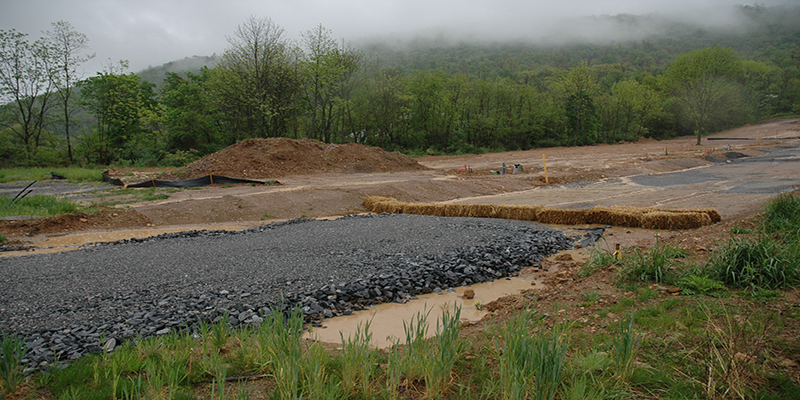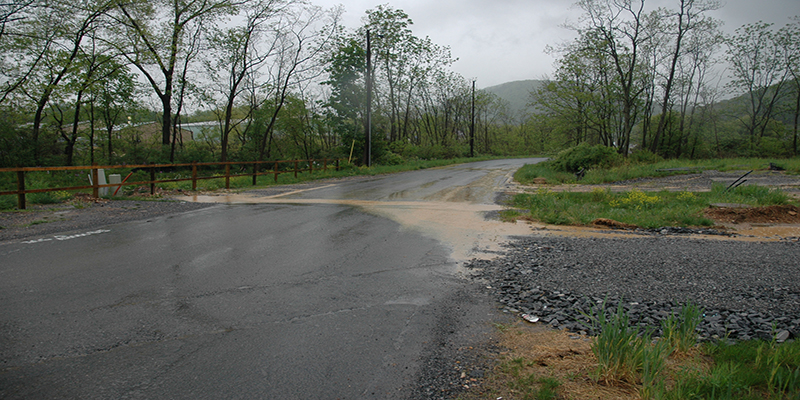When streams and rivers run brown and opaque from fine suspended sediments, they are certainly less appealing to the eye. After prolonged, heavy downpours we expect to see waterways in a high and discolored condition. But when small streams turn to mud after light rains, we can usually fault human disturbance in the watershed for the sediment impacts.
The five images in this carousel show the results of several hours of light rain on a disturbed site and the effect on a small trout stream near Bedford. The watershed for this creek upstream of the site of these photos is more than 18 square miles yet the water in the creek appears little affected by run-off until encountering the mud-laden discharge from this unstabilized construction site.
Erosion is a natural process in which land surfaces are worn away by wind, water, chemical action or other processes with the material transported away. (Weathering is similar but without the material transport.) Accelerated erosion occurs when human activities affect the land surfaces' ability to resist erosion, most often by removing vegetation cover.
Excess sediments washing from mining sites, plowed fields, timber harvesting operations or construction excavations is pollution. The particles of soil eroded from unstabilized land areas has many adverse effects on the condition of the stream and the life in and around it. Silt particles suspended in the water cause damage to fish's gills and make breathing difficult. Bacteria are often attached to silt particles and can cause infections. Suspended sediments also block sunlight from reaching green plants that grow from the stream bottom. Sediments deposited on stream beds can smother fish eggs as well as small invertebrates that fish and other stream life rely upon for food. Phosphorus is a necessary nutrient for crops and other plants and most forms are not as soluble as other nutrients such as the nitrogen compounds. Phosphorus is often bound to small particles in the soil and when erosion occurs these fine soil particles carry the phosphorus into streams, rivers, and eventually larger bodies like the Chesapeake Bay where excess nutrients can cause severe problems such as algal blooms.
Controlling erosion and sediment pollution is the responsibility of everyone who disturbs vegetative cover on land surfaces. Plant cover reduces the erosive effect of rainfall and root systems help to stabilize soils on slopes or stream banks. Depending on the size of the area of disturbance, a construction project may require a written plan for controlling erosion be on-hand at the site or, in some cases, a plan must be submitted to the Conservation District for review and approval. Larger projects will require NPDES (National Pollution Discharge and Elimination System) permits and more detailed review.




